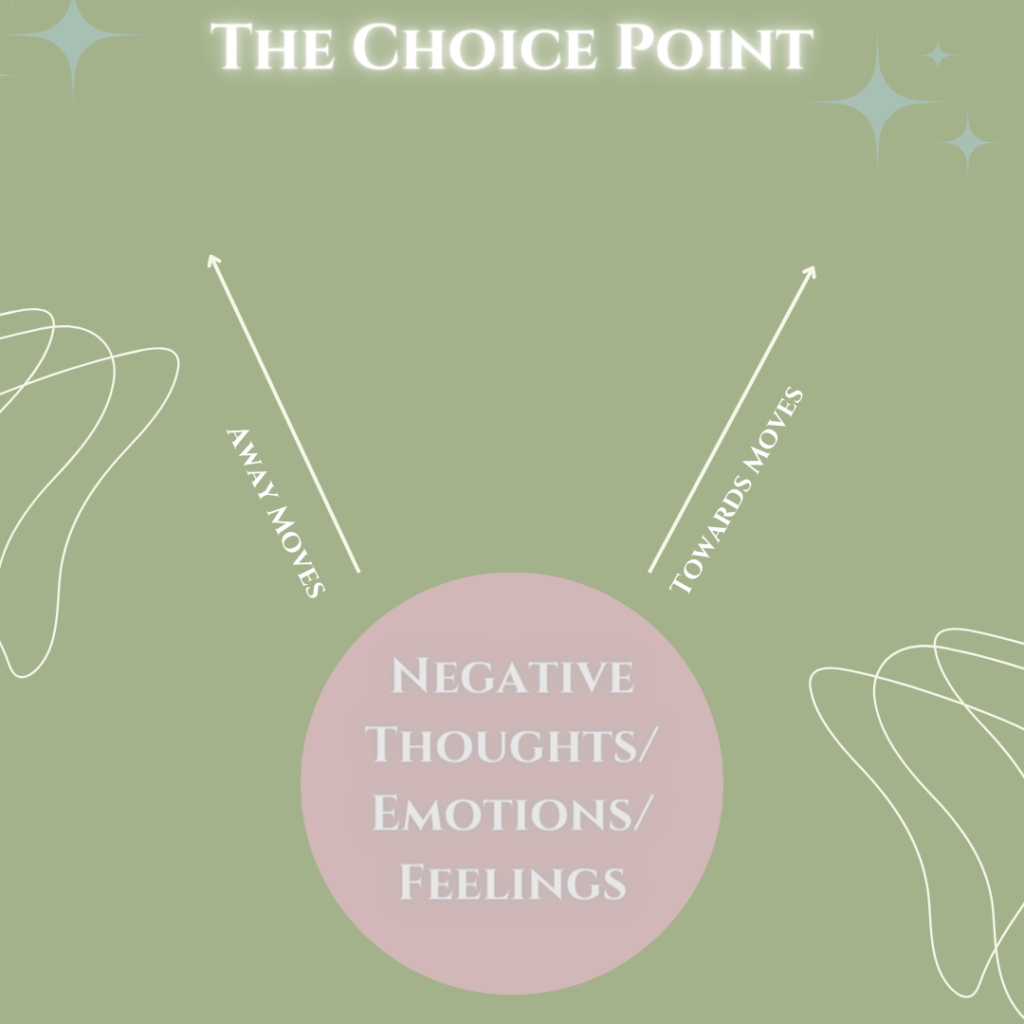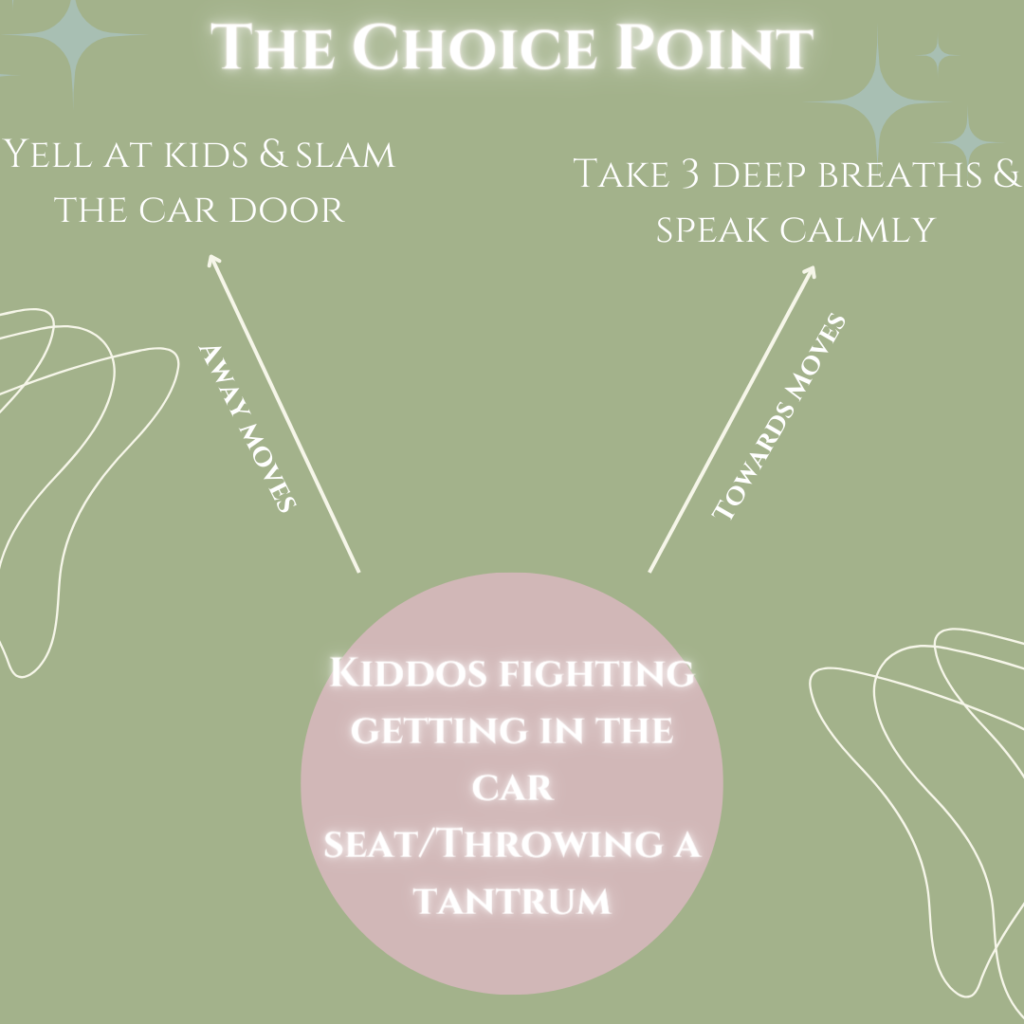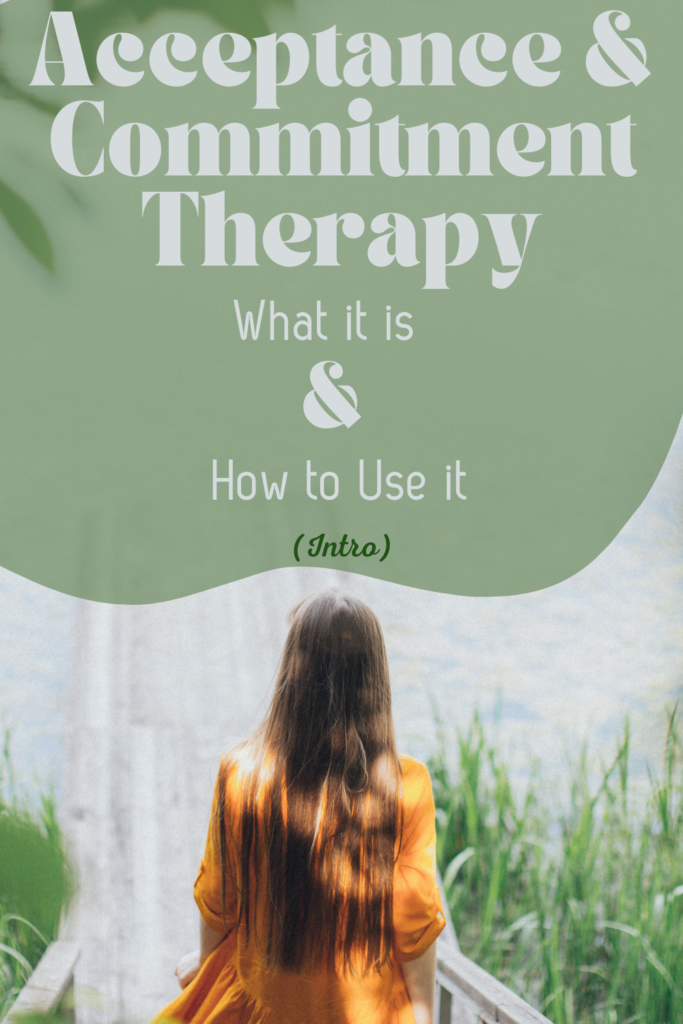Sharing is caring!
The Daily-Use Tool Of Mindfulness for SAHMS
What in the heck is a choice point and what does it have to do with me and being a mom and mindfulness? Well, the answer to that is a choice point is a tool that acceptance & commitment therapy (ACT) experts created to use as a way of evaluating your actions when it comes to antecedents or, in other words, private or observable behaviors that happen before the actions you choose.
As a SAHM, you encounter countless situations during the day that challenge your ability to stay calm and engage with your kiddos the way you WISH you could engage with them. So, I’ve created this post to introduce you to using the choice point and how to become a mindfulness master!
I’m going to walk you through some examples of how to use it as a stay-at-home mom. Using it will lead to making choices after practicing mindfulness in the midst of those very tough feelings/emotions that comes with being a SAHM.
Introducing: The Choice Point Diagram

In the circle or at the bottom you have certain thoughts, feelings or emotions that can then lead to either “away moves” or “towards” moves.
When I talk about “away moves” I’m talking about actions that lead you away from your values. When I say “values” I mean ways of being that are important to you such as being kind, mindful or loving towards your kiddos. More on that in the next paragraph.
How do I start to use The Choice Point?
Using the choice point begins with your choosing your values.
Choosing your values can be immensely helpful in helping you to choose action steps or behaviors for yourself. Here’s a PDF of Dr. Russ Harris’s Values.
An Example of Values & Aligned Behaviors
Here’s an example of what a value can do for you when it comes to choosing behaviors or actions that align with your values.
I value being kind towards myself and others as a mother. So that means I have a list of behaviors that I consider in alignment with that value and a list of behaviors that don’t align with that value.
Value: Being Kind | |
Behaviors that don’t align/Away Moves | Behaviors that do align/ Towards Moves |
Yelling | Speaking calmly |
Placing demands instead of asking (when applicable) | Asking if my kiddo can do something (when applicable) |
Using a harsh or disrespectful tone | Saying please and thank you |
Another example:
Value: Mental & Physical Fitness | |
Behaviors that don’t align/Away Moves | Behaviors that do align/ Towards Moves |
Being sedentary for too long | Exercising |
Eating certain foods too often (fast-food or unhealthy foods) | Meditating |
Never sitting still to “relax” | Eating nourishing foods |
These behaviors can be made much more specific! In fact, making them more specific is necessary if you want to hold yourself accountable😊
You can create a table like this for ANY of the values listed on Dr. Russ Harris’s values checklist.
Diving deeper...
Let’s move on to how choosing the value of being respectful can come into play when using the choice point.
Say frustration arises from not being listened to by your kiddos all day. Does this sound familiar? I’m sure it does if you’re a mom!
Feeling frustrated towards little minions that won’t listen can EASILY lead to yelling and using a harsh tone BUT those two actions are considered “away moves.”
So, what can you do instead?
Pause. Use mindfulness to take just one breath. Then remember what behaviors DO align with your values.
Try to speak calmly or simply take a step back and remove yourself from the situation for 5-10 seconds or more. Let the kiddos KNOW what you’re doing. You can tell them that you’re frustrated and that, because of that, you’re going to breathe and not respond for a duration of time.
Intention is what matters most!
Practicing mindfulness on a regular basis in the middle of these tough situations with your kiddos is a fantastic intention to start with. Mindfulness opens up so many doors to you as a SAHM not to mentions it allows you to pause for just a bit to observe your feelings in relation to the chaos that is ensuing before you.
I’ve done this countless times with my kiddos so that I can choose actions that align with my being respectful towards my kiddos and I’ve always been grateful for this. Do I manage to accomplish this 100% of the time? Nope! But I do have the intention to stick to “towards moves” as often as I can.
The 6 Core Principles of ACT will Help with Mindfulness
There are 6 core principles of ACT.
Defusion- You are NOT your thoughts. Do not FUSE with your thoughts
Expansion- Do not struggle with your thoughts, just make room for them in your mind. Accept them.
Connection- Connect with the moment that happening right here and now.
The observing Self- Take the stance of the never changing observer in your mind…you are the observer of your thoughts
Values- Let your values lead what behaviors you choose
Committed Action- Choose actions that align with your values.
If you want a solid but short rundown on how to use these 6 core principles on a regular basis then check out my post on that here.
The Two Principles that Lead to Mindfulness
All 6 core principles of ACT can play into using the choice point but the two that remind me most of mindfulness are connection is taking the stance of the observing self and connecting to the present moment.
To take the stance of “observing self” means you have to, first, connect to the present moment. Observing self should be a stance you take in your mind at which you can simply observe your thoughts/feelings/emotions. This allows you to not automatically become and act on these thoughts/feelings/emotions.
This is very helpful when you’re feeling overwhelmed by these thoughts/feelings/emotions.
Take a step back, pause, observe how you feel, acknowledge that feeling and then make a choice that aligns with your values. This doesn’t take more than 10 seconds MAXIMUM. Our thoughts move so rapidly through our mind that pausing at all to notice them for any amount of time is an accomplishment.
Relatable Example of Using the Choice Point

In an ideal situation, you’re feeling the negative feeling, pause, observe and acknowledge the feeling, and then choose an action that aligns with your values in the end.
In Conclusion...
I hope this post makes sense and is useful un your day-to-day life. As SAHMs, it is so important to learn to practice mindfulness (just pause for a second) in a moment of frustration. Why not use that moment to then choose an action that aligns with what is important to you.
Please leave me some feedback or any thoughts you might have! I love to hear from my readers😊
Sharing is caring!

